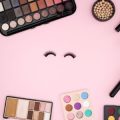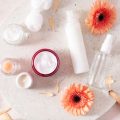1. Introduction: Why Indie Cruelty-Free Matters in the U.S.
In recent years, the American beauty landscape has seen a major shift toward indie makeup brands that champion cruelty-free values. This movement isn’t just about trendy packaging or niche ingredients—its deeply rooted in a growing demand from consumers who want their beauty routines to align with their ethical beliefs. More and more Americans are choosing to support brands that refuse to test on animals, reflecting a broader cultural push for transparency and responsibility in the products we use daily. From Gen Z shoppers to seasoned beauty enthusiasts, theres an increasing awareness about where makeup comes from and how its made. This surge in interest has propelled indie cruelty-free brands into the spotlight, as they offer not only innovative formulas but also peace of mind for those looking to make kinder, more conscious choices at the checkout. As consumers become savvier about ingredient lists and production methods, the rise of indie cruelty-free makeup is transforming how Americans define beautiful skin—and what it means to shop with purpose.
2. Defining Indie: What Sets These Brands Apart
In the U.S. beauty market, the term “indie” goes far beyond just being a buzzword—it represents a unique approach to makeup that challenges industry norms and appeals to conscious consumers. But what really qualifies as an indie beauty brand? Let’s break down the defining characteristics that set these brands apart from their mainstream counterparts.
Small-Batch Production: Quality Over Quantity
Unlike mass-produced cosmetics, indie cruelty-free makeup brands are known for their small-batch production methods. This often means each product is crafted with greater attention to detail and higher-quality ingredients, offering consumers formulas that feel more exclusive and thoughtfully made. Small-batch manufacturing also gives these brands the flexibility to innovate rapidly and respond directly to consumer feedback.
Founder-Led Ethos: Personal Vision Drives Innovation
Another hallmark of indie brands in America is the strong, founder-led ethos behind them. Many of these companies are started by passionate individuals—makeup artists, skincare experts, or beauty enthusiasts—who want to disrupt industry standards. Their personal stories and values often shine through in everything from ingredient selection to branding, making their products deeply relatable to niche communities.
Niche Community Appeal: Cultivating Loyal Fans
Indie cruelty-free makeup brands typically thrive by connecting with specific audiences—think vegans, people with sensitive skin, or those seeking bold, unconventional colors. These brands build loyal followings by listening closely to their community’s needs and preferences, often using social media as a direct line for feedback and collaboration.
Key Differences: Indie vs Mainstream Makeup Brands
| Indie Brands | Mainstream Brands | |
|---|---|---|
| Production Scale | Small-batch, limited runs | Mass production |
| Ownership | Founder-led, independent ownership | Corporate-owned or conglomerate-backed |
| Community Engagement | Direct, niche-focused interaction | Broad-market campaigns |
| Cruelty-Free Commitment | Core value; often certified by Leaping Bunny or PETA | Varies; sometimes optional or partial adoption |
| Product Innovation | Agile, trend-responsive, highly customizable | Slower adaptation due to scale and bureaucracy |
The Takeaway for American Beauty Lovers
If you’re looking for makeup that reflects your values—whether that’s animal welfare, ingredient transparency, or supporting small businesses—indie cruelty-free brands offer something truly different. Their commitment to quality, authenticity, and community is changing how Americans shop for beauty products and inspiring a new wave of conscious consumption.

3. Understanding ‘Cruelty-Free’: Labels, Certifications, and Common Misconceptions
When it comes to cruelty-free makeup in the United States, the term can be confusing—even for the most passionate beauty lovers. At its core, “cruelty-free” means that a product and its ingredients have not been tested on animals at any stage of development. However, American consumers often encounter a maze of logos and claims on packaging, making it tricky to know which brands genuinely align with ethical practices.
The Main Certifications: Leaping Bunny & PETA
The two most recognized cruelty-free certifications in the U.S. are Leaping Bunny and PETA’s Beauty Without Bunnies. Leaping Bunny is considered the gold standard because it requires brands to undergo rigorous audits, ensure every supplier is also cruelty-free, and recommit annually. PETA’s certification, while still meaningful, relies more on brand self-reporting and doesn’t audit suppliers as strictly. Indie brands aiming for trustworthiness often pursue one or both certifications to demonstrate transparency.
What American Consumers Often Get Wrong
Despite widespread interest in animal-friendly beauty, there are some common misconceptions:
1. Not All “Cruelty-Free” Claims Are Equal
A bunny logo or “cruelty-free” wording doesn’t guarantee third-party verification. Some brands create their own logos or use ambiguous phrasing, so always look for official certifications like Leaping Bunny or PETA.
2. Cruelty-Free Doesn’t Always Mean Vegan
Cruelty-free products aren’t necessarily free from animal-derived ingredients (like beeswax or carmine). If you’re looking for both vegan and cruelty-free, check for both labels.
3. Parent Company Matters
Some indie brands are owned by larger corporations that may test on animals in other markets (like mainland China). If complete cruelty-free ethics matter to you, research both the indie brand and its parent company.
Why This Matters for Indie Brands
Indie cruelty-free brands are often more transparent about their sourcing and testing practices because they build their reputation on ethical values. Understanding what these labels truly mean helps American shoppers make informed choices that align with their personal beliefs—and support the indie beauty revolution.
4. Ingredients Focus: Clean, Ethical, and Skin-Friendly Formulations
One of the standout qualities of indie cruelty-free makeup brands is their commitment to clean, ethical, and skin-friendly ingredient choices. Unlike conventional beauty brands that may rely on animal-derived ingredients or harsh chemicals, indie brands are pioneering safer, more transparent formulas designed for all skin types and ethical preferences.
Common Ingredient Swaps in Indie Cruelty-Free Makeup
| Traditional Ingredient | Cruelty-Free Swap | Benefits |
|---|---|---|
| Carmine (from insects) | Vegan Red Pigments (e.g., beetroot extract, synthetic iron oxides) | No animal harm; less risk of allergic reactions |
| Lanolil (from sheep wool) | Plant-Based Squalane (from olives or sugarcane) | Deep hydration; non-comedogenic; suitable for sensitive skin |
| Beeswax | Candelilla Wax or Carnauba Wax | Vegan-friendly; lightweight texture; good for oily or acne-prone skin |
| Talc | Mica or Cornstarch | Gentler on sensitive skin; reduced risk of irritation or clogged pores |
How These Swaps Benefit Different Skin Types
For Sensitive Skin
Switching out common irritants like talc and synthetic fragrances for natural alternatives helps reduce redness and flare-ups. Look for products labeled “fragrance-free” and “hypoallergenic.” Brands like Tower 28 and ILIA specialize in minimalist ingredient lists ideal for reactive complexions.
For Oily/Acne-Prone Skin
Cruelty-free swaps like plant-based squalane offer lightweight moisture without clogging pores. Many indie brands avoid comedogenic oils and heavy waxes, making them a safer choice for those prone to breakouts. Opt for non-comedogenic formulas from brands like Kosas or Youthforia.
For Dry/Dehydrated Skin
Indie brands often use nourishing butters (like shea or mango) and hydrating humectants (like glycerin or hyaluronic acid). These ingredients help maintain the skin’s moisture barrier and give a dewy finish—perfect for dry complexions.
Pro Tip: Always Patch Test New Products!
No matter your skin type, patch testing new products is essential. Even with clean ingredients, everyone’s skin reacts differently. Apply a small amount behind your ear or on your wrist first before using it on your face.
5. Spotlight on Must-Know Indie Cruelty-Free Makeup Brands
When it comes to indie cruelty-free makeup brands, the U.S. is home to some true trailblazers that blend innovative formulas with strict ethical standards. These standout brands are redefining what it means to be both trendy and conscious, offering everything from bold pigments to skin-loving ingredients without any animal testing.
Kosas
Based in California, Kosas is shaking up the beauty world with its clean, skin-centric approach. Their cult-favorite Tinted Face Oil Foundation delivers a featherweight finish packed with nourishing botanicals like jojoba and avocado oils. Kosas not only steers clear of animal testing but also formulates without parabens, phthalates, or mineral oil—making their products ideal for sensitive or reactive skin.
Tower 28 Beauty
This Venice Beach-based brand focuses on “clean makeup designed for sensitive skin.” Tower 28’s best-sellers, such as the ShineOn Lip Jelly and BeachPlease Luminous Tinted Balm, are vegan, dermatologist-tested, and formulated without fragrance or common irritants. Their commitment extends beyond cruelty-free: they’re transparent about ingredient sourcing and eco-friendly packaging efforts.
Milk Makeup
Hailing from New York City, Milk Makeup has made waves with its playful, multipurpose products that cater to all genders and skin tones. Their Hydro Grip Primer and Kush Mascara have reached cult status, thanks to plant-derived ingredients like hemp seed extract and aloe water. Milk Makeup is 100% cruelty-free and leans heavily into vegan offerings while championing inclusivity in every campaign.
Ethical Edge: Why These Brands Matter
What sets these indie brands apart isn’t just their unique formulas—it’s their dedication to transparency, sustainable practices, and advocacy for animal welfare. By choosing these standouts, you’re not only supporting innovative American entrepreneurship but also taking a stand against animal cruelty in the cosmetics industry.
Skin Situation Tip:
If you have sensitive or breakout-prone skin, these indie brands offer ingredient-conscious options that prioritize soothing botanicals and skip harsh chemicals. Always patch-test new products and check for allergen information to find your perfect match within this thriving community of ethical beauty pioneers.
6. How to Make the Switch: Tips for U.S. Consumers
Transitioning your beauty routine to indie cruelty-free makeup brands is not just a trend—its a conscious lifestyle choice that aligns with both ethical values and personal care standards. Here’s how American consumers can make the switch smoothly and confidently:
Start with Ingredient Awareness
Begin by analyzing ingredient lists. Many indie cruelty-free brands highlight natural or non-toxic components, which can benefit sensitive or acne-prone skin. Look for clear labeling like “vegan,” “paraben-free,” and “fragrance-free” if you have specific skin concerns.
Research Brand Ethics and Certifications
Not all “cruelty-free” claims are equal. Seek out certifications from trusted organizations such as Leaping Bunny or PETA. American indie brands often showcase these badges on their websites, making it easier to verify authenticity.
Shop Smart: Where to Find Indie Cruelty-Free Brands
Expand your search beyond big-box stores. U.S.-based online retailers like Credo Beauty, The Detox Market, and small independent boutiques offer curated selections of cruelty-free brands. Farmers markets and local pop-ups in cities like Austin, Portland, and Brooklyn are also great spots to discover new favorites.
Read Reviews and Join Communities
Tap into online communities such as Reddit’s r/IndieMakeupandMore or Facebook groups dedicated to cruelty-free beauty. These platforms provide honest reviews, swatch photos, and real-life experiences from fellow American consumers, helping you avoid disappointing purchases.
Transition Gradually
No need to toss everything at once! Replace products as you finish them—starting with essentials like foundation or mascara—to minimize waste while building your new routine.
Support Local Indie Initiatives
Many American indie brands give back through charity partnerships or eco-friendly packaging initiatives. By supporting these companies, you’re reinforcing community-driven values and sustainable practices within the U.S. beauty industry.
With these actionable steps, embracing indie cruelty-free makeup becomes an empowering journey that reflects your unique needs and values—while supporting innovative American beauty brands paving the way toward a more ethical future.


